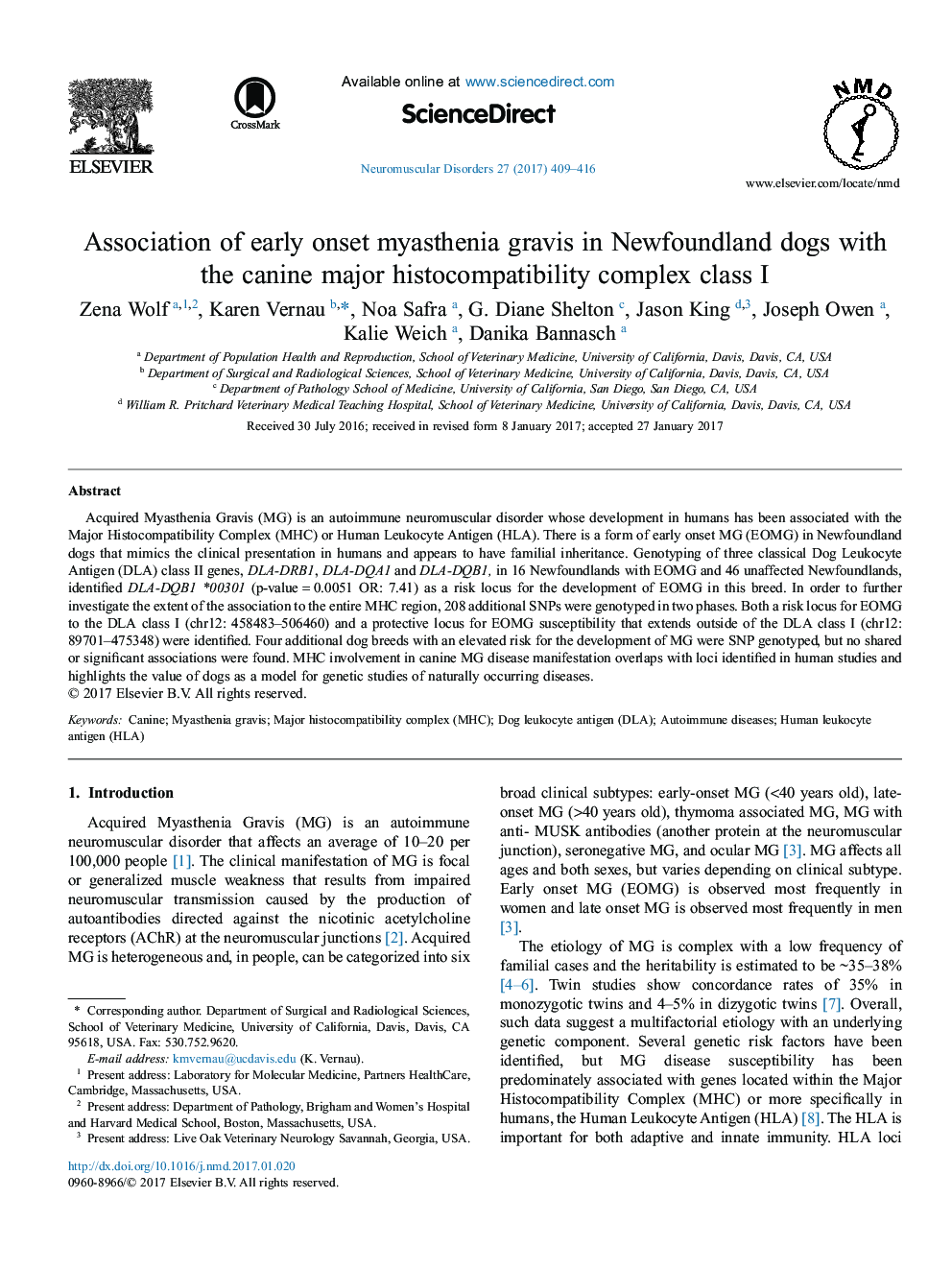| Article ID | Journal | Published Year | Pages | File Type |
|---|---|---|---|---|
| 5632276 | Neuromuscular Disorders | 2017 | 8 Pages |
â¢Genotyping of dogs with myasthenia gravis identified an association with the MHC.â¢This associated region overlaps with what has been previously identified in humans.â¢Dogs serve as a valuable animal model to better understand human disease.
Acquired Myasthenia Gravis (MG) is an autoimmune neuromuscular disorder whose development in humans has been associated with the Major Histocompatibility Complex (MHC) or Human Leukocyte Antigen (HLA). There is a form of early onset MG (EOMG) in Newfoundland dogs that mimics the clinical presentation in humans and appears to have familial inheritance. Genotyping of three classical Dog Leukocyte Antigen (DLA) class II genes, DLA-DRB1, DLA-DQA1 and DLA-DQB1, in 16 Newfoundlands with EOMG and 46 unaffected Newfoundlands, identified DLA-DQB1 *00301 (p-valueâ=â0.0051 OR: 7.41) as a risk locus for the development of EOMG in this breed. In order to further investigate the extent of the association to the entire MHC region, 208 additional SNPs were genotyped in two phases. Both a risk locus for EOMG to the DLA class I (chr12: 458483-506460) and a protective locus for EOMG susceptibility that extends outside of the DLA class I (chr12: 89701-475348) were identified. Four additional dog breeds with an elevated risk for the development of MG were SNP genotyped, but no shared or significant associations were found. MHC involvement in canine MG disease manifestation overlaps with loci identified in human studies and highlights the value of dogs as a model for genetic studies of naturally occurring diseases.
